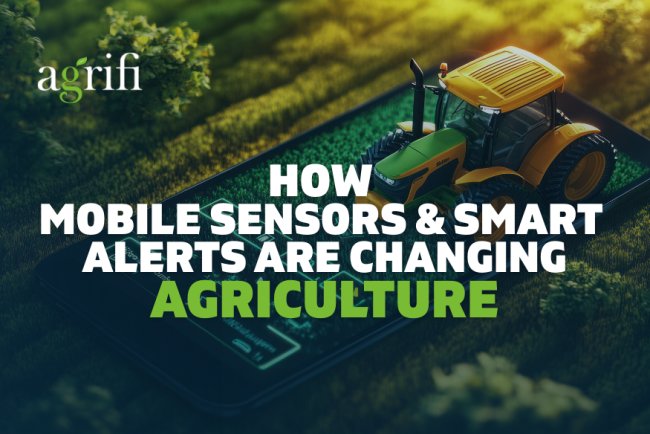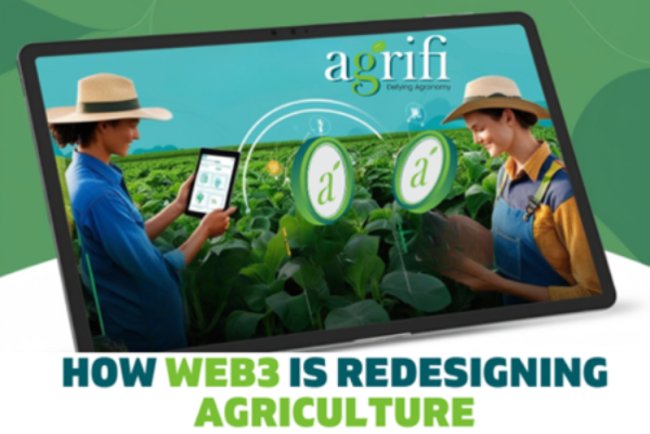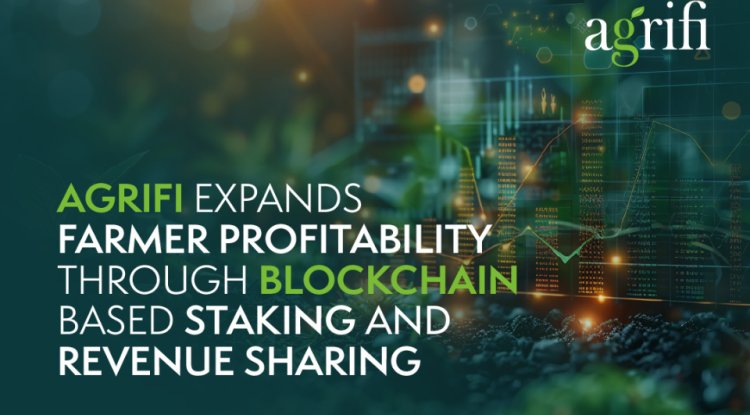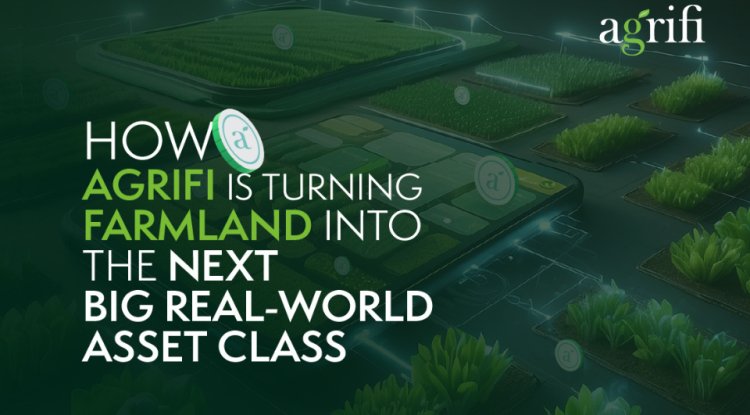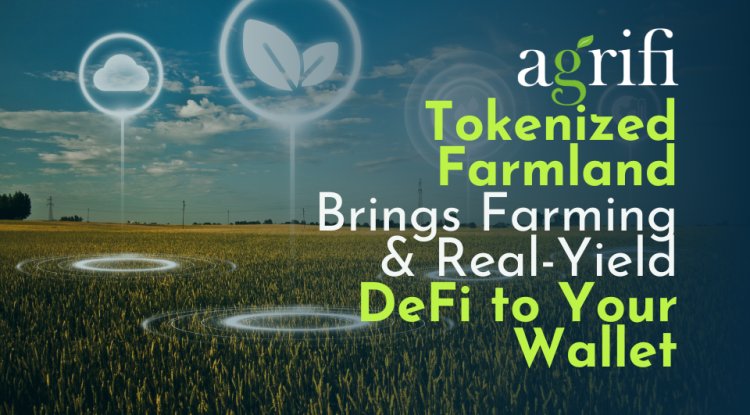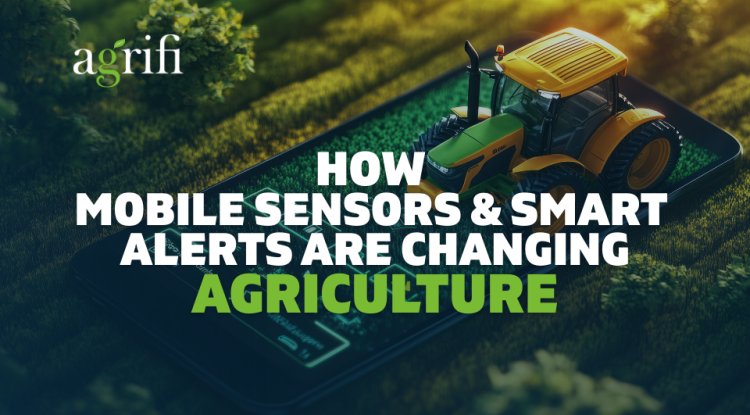How AgriFi Is Turning Farmland into the Next Big Real-World Asset Class
AgriFi bridges agriculture and DeFi with blockchain-based farmland tokenization, fractional ownership, and real-world yield sharing on the Polygon network. Discover how the AGF token is powering a new era of Real-World Assets (RWAs).
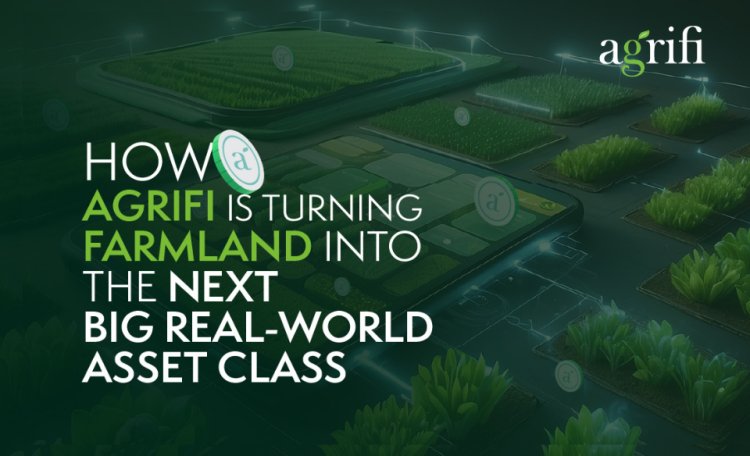
AgriFi, a blockchain-powered agricultural finance protocol, is redefining how farmland becomes an investable, yield-generating, and transparent real-world asset (RWA).
By combining DeFi infrastructure with data-verified agriculture, AgriFi enables fractional farmland ownership and yield-backed returns, transforming farmland from an illiquid legacy asset into a transparent, tradable, and traceable digital investment.
Reimagining Agriculture as a Real-World Asset (RWA)
For centuries, farmland has been the backbone of global wealth creation, but one largely inaccessible to ordinary investors.
AgriFi is changing that narrative.
By tokenizing farmland and crop yields on the Polygon network, AgriFi introduces a new data-backed asset class where ownership, yield, and transparency are verifiable on-chain.
Through the AGF Token, investors can participate in the global agricultural economy, farmers can access capital efficiently, and consumers can trace their food with confidence.
“Agriculture is the foundation of real-world value. At AgriFi, we’re transforming it into a transparent, investable digital ecosystem where every crop, every parcel, and every transaction tells a verifiable story.”- Veronica Trump, CMO at AgriFi
From Real-World to On-Chain
Real-World Assets (RWAs) are physical or off-chain assets represented on blockchain via tokenization, enabling them to be traded, used as collateral, or integrated into DeFi protocols.
The tokenized asset sector has already crossed over USD 30 billion in on-chain value, showing rising institutional appetite for assets beyond just native crypto. Yet most RWA efforts to date emphasize real estate, private credit, or treasury instruments, not agriculture.
AgriFi fills the missing link: bringing farmland, crop yields, and agri-production into the on-chain DeFi economy.
Why Agriculture Is Poised to Be the Next Trillion-Dollar RWA Category
- Foundational and Tangible
Land and crop yields are among the most essential, enduring real assets. Unlike speculative assets, agriculture is tied to food production and global demand. - Illiquidity of Traditional Agriculture
Farmland and crop yields are historically illiquid: high entry thresholds, geographic constraints, fragmented ownership, and limited access for small investors. Tokenization unlocks liquidity and divides ownership. AgriFi eliminates these barriers through fractional blockchain ownership, making agriculture accessible to retail and institutional investors alike. - Growing Demand for Sustainable & Traceable Investments
ESG-focused capital is increasingly seeking assets that deliver real-world impact, climate alignment, and traceability. Agriculture inherently aligns with these investor goals. - Data-Backed & Transparent
With IoT sensors, AI models, and oracle integrations, AgriFi ensures every metric from soil health to crop yield is verified and recorded on-chain.
Advances in IoT sensors, satellite imagery, AI agronomic models, and oracle systems make verifying yield, crop health, and land quality feasible, reducing risk in tokenized agriculture. AgriFi’s whitepaper documents these integrations. - Diversification & Yield Potential
Agriculture offers an asset class uncorrelated or partially decorrelated from traditional markets, offering yield potential tied to crop performance rather than financial cycles.
How AgriFi’s Tokenization Model Works
1. Asset Structuring & Legal Wrapping
AgriFi establishes a legal structure linking real farmland or project parcels to a special-purpose vehicle or contract framework that anchors token value to that underlying asset.
2. Fractional Token Issuance via AGF Token / Sub-Tokens
The underlying asset is divided into digital tokens (e.g. “AGF-Farm-X tokens”), which represent fractional ownership or participation in yield. The AGF Token acts as the native utility token within the ecosystem (WhitePaper: agrifi.tech)
3. Data & Yield Verification
IoT sensors, remote sensing, and agronomic models input crop health, environmental metrics, and harvest data. Verified oracles feed this into smart contracts, enabling yield-based distributions and performance tracking.
4. Distribution of Returns
After harvest, token holders receive returns—either in stablecoins, yield tokens, or reinvestment—according to predefined smart contract rules (e.g. percent to token holders, operational reserves, development funds).
5. Secondary Markets & Liquidity
Tokenized farmland shares can be traded on compatible DeFi markets or via whitelisted exchanges, enabling liquidity and price discovery.
The AgriFi Architecture
AgriFi operates on a multi-layered ecosystem that connects real-world farmland with blockchain infrastructure.
Blockchain Layer – Powered by Polygon
- Network Choice: Polygon’s high throughput and low transaction fees enable real-time interactions like staking, trading, and voting.
- Token Standard: ERC-20 compliant AGF Token, total supply 7.2 billion, fully circulating.
- Smart Contracts:
- Ownership Contract: Links AGF tokens to specific farmland portfolios.
- Staking Contract: Enables lock-ups (30–360 days) with APYs between 5%–18%.
- Profit Distribution Contract: Automates yield payouts from agricultural profits in stablecoins.
- Governance Contract: Allows token holders to vote on new farmland projects and protocol parameters.
- Security: Audit-ready contracts; upgradeable proxy patterns recommended.
Business Logic Layer
- Farmland Tokenization Module: Converts agricultural assets into blockchain-based ownership tokens.
- Profit Sharing Module: Off-chain revenue (e.g., crop sales/leases) convertible to stablecoins for on-chain distributions by formula.
- Governance (DAO): Implements democratic decision-making with weighted voting rights.
- Oracle Integration: Fetches crop yields, commodity prices, and land valuations using Chainlink and verified data feeds.
Off-Chain & Data Layer
- Secure Database: Stores metadata like land size, legal documents, and KYC data.
- IoT Integration: Connects real-time devices for monitoring soil, water, and crop health.
- File Storage: Leverages IPFS/Filecoin for immutable records of land titles and audits.
- Compliance: Integrates KYC/AML frameworks and legal recognition of tokenized ownership.
Access & liquidity:
- API gateway + Web3 for wallets (MetaMask, WalletConnect).
- DEX readiness on Polygon (e.g., QuickSwap/SushiSwap) and compliant venues; liquidity programs can be activated without over-promising listings.
The AGF Token: Fueling the Decentralized Farming Economy
The AGF Token lies at the heart of the AgriFi ecosystem. It is not just a financial instrument, it is the economic backbone connecting farmers, investors, and DeFi participants.
Token Highlights
- Network: Polygon (ERC-20)
- Total Supply: 7.2 Billion AGF
- Fully Circulating: No hidden or locked reserves
- Market Cap (at latest snapshot): ~$274 Million
Core Utilities
- Fractional Farmland Ownership:
Each token represents a share in real farmland portfolios—offering liquidity, diversification, and transparency. - Sustainable Yield Generation:
Earn 5–18% APY by locking tokens for 30–360 days. Rewards are funded from verified agricultural returns, not speculative inflation.
3. Profit Sharing:
Token holders receive periodic stablecoin distributions reflecting farm-generated revenue.
4. Governance Participation:
AGF holders vote on farmland acquisitions, staking parameters, and sustainability initiatives.
AgriFi goes beyond finance; it’s redefining trust in food.
- Product Authentication: Each batch is assigned a unique Digital Twin Token, tracking its journey from farm to shelf.
- Food Safety & Recalls: Blockchain traceability enables real-time batch recalls in case of contamination.
- Ethical & Sustainable Sourcing: Certification tokens verify organic, fair-trade, and ESG standards.
- Consumer Apps: Enable QR scanning, sustainability tracking, and reward tokens for ethical purchasing.
Through this model, AgriFi unites farmers, investors, retailers, and consumers in a single, transparent ecosystem.
By merging blockchain, DeFi, and IoT, AgriFi is:
- Democratizing agricultural investment for everyone, from retail investors to institutions.
- Driving sustainable, data-driven farming through transparent capital flows.
- Building the foundation for a global Agri-DeFi economy where profit, transparency, and sustainability coexist.
About Agrifi
Agrifi is driving an agricultural revolution, harnessing blockchain technology to transform the agricultural supply chain. Our mission is to enhance transparency, efficiency, and sustainability in agriculture while empowering farmers and supporting small-scale agricultural practices.
Join us on this exciting journey to explore the future of agriculture while potentially enhancing the value of your AGF tokens. We’re not just redefining agricultural finance; we’re revolutionizing the future of farming and food production.
Ready to start staking your AGF tokens? Visit our website at https://agrifi.tech/for detailed steps on how to stake your tokens. Stay connected with us on Telegram, Twitter, Facebook and Instagram for the latest updates and community discussions.
Follow Us on:
- Website: https://agrifi.tech/
- WhitePaper: https://agrifi.gitbook.io/agrifi-docs
- Blog: https://blog.agrifi.tech
- Telegram: https://t.me/agrifi_official
- Facebook: https://www.facebook.com/agrifiofficial
- Instagram: https://www.instagram.com/agrifi_official/
- Twitter: https://x.com/Agrifi_official
FAQ
Q1: What is AGF Token?
AGF is the native token of the Agrifi platform, offering fractional farmland ownership, crop-backed staking rewards, and governance participation.
Q2. Where can I buy AGF Tokens?
AGF is currently available on LBank and Bitbulls centralized exchanges. You can also buy AGF directly through Agrifi’s official DEX platform at https://dex.agrifi.app using a Polygon-compatible wallet like MetaMask.
Q3. What do I need to start?
You’ll need a Web3 wallet such as MetaMask.
- To swap via dex.agrifi.app, connect your MetaMask wallet and trade using USDT or MATIC.
- To buy via exchanges like LBank or Bitbulls, you can transfer USDT from your existing exchange (e.g., Binance) and trade for AGF.
Q4. What is the minimum investment amount?
The minimum investment typically starts from just $10, depending on the exchange’s trading rules.
Q5. Is AGF considered a Real-World Asset (RWA)?
Yes. AGF represents fractional ownership of farmland and its corresponding crop output, making it a blockchain-powered Real-World Asset with measurable economic and environmental value.
Q6: Is AGF Token secure?
Yes. It runs on the Polygon blockchain with smart contracts managing staking, governance, and agri-data integration.
Q7: What makes AGF different from other DeFi tokens?
Unlike many tokens, AGF is anchored to real agricultural output, providing tangible yield and ESG benefits.
Q8. Is AGF available globally?
Yes. As a Polygon-based asset, it is accessible via most Web3 wallets and DeFi platforms globally.
What's Your Reaction?







